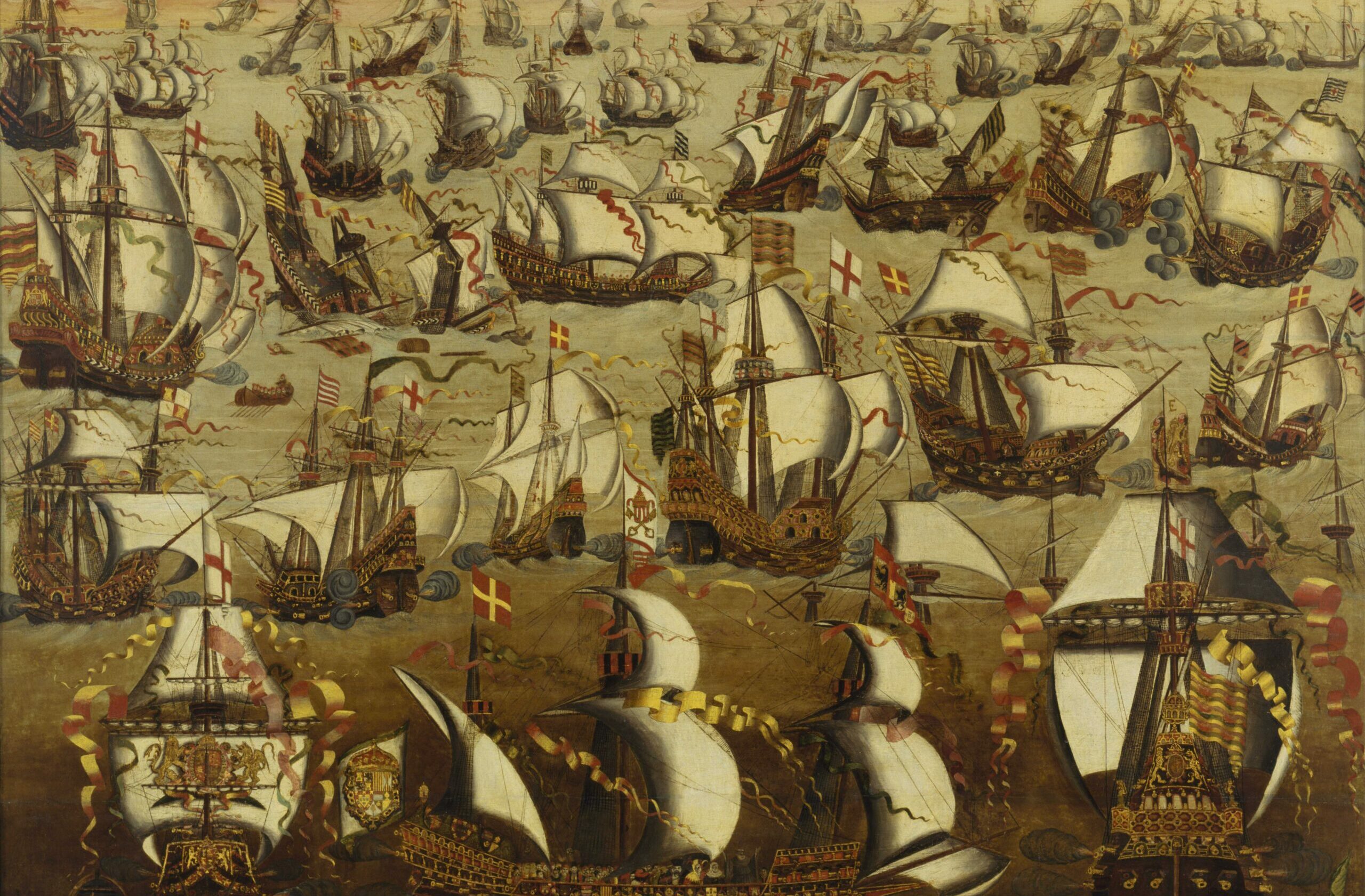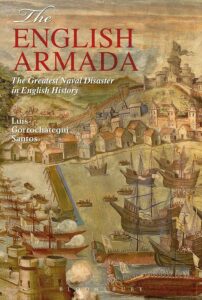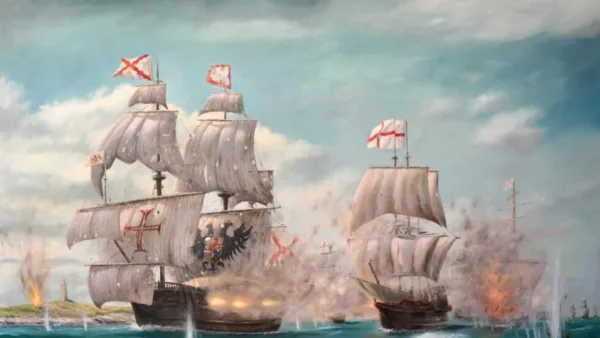Source:El Debate
The writer Luis Gorrochategui, author of The English Armada, responds to the statements of the renowned British Hispanist in which he affirms that “the English Counter Armada of 1589 did not lose a single ship”.
While I am packing my bags to attend the fourth conference on The Black Legend on September 30, organized by Javier Santamarta in El Escorial, an idea is insistently rumbling in my head. I read a few days ago, in the ABC newspaper, an interview with the renowned Hispanist Geoffrey Parker in which he affirms that the English Counter Armada of 1589 did not lose a single ship.
I contacted journalist Manuel Villatoro and he confirmed that he wrote what the historian told him. I find it hard to believe this statement from the mouth of a researcher with such a long career. Actually, I have read many articles about this in recent years. Indeed, the publication of my book The English Armada. The Greatest Naval Disaster in English History (London, Bloomsbury Academic, 2018) generated, in a way that the Spanish-speaking world can only wish for, a good number of reviews in the leading journals in English. No one disputed its figures, based on primary sources and large documentary compilations, among which Richard Bruce Wernham’s, considered by The Times the leading historian of English foreign policy in the 16th century, stands out.
On the occasion of the 400th anniversary, Wernham published his indispensable The Expedition of Sir John Norris and Sir Francis Drake to Spain and Portugal, 1589 (Aldershot, Temple Smith, 1989). After a careful analysis of the documents compiled in this work, we know that the English Armada was composed of 180 ships “plus the loose ones”, most of them small. Of all of them, following Wernham, we know the names of 15 that were lost: Thomas, Fortune, Nightingale, Minion, Emmanuel, Phoenix, Crescent, Godspeed, Gift, Bartholomew, Relief, Greyhound, Francis, Gift, and the famous Golden Hind.
Comparing other sources located in Spain, we know that in La Coruña four ships were damaged: “Two Nabichuelos de trabés half burned, another one more damaged in the Fort of San Antón, and also another one very badly damaged from the storm they had on the 4th day of the siege”. A month after being repelled from Galicia, after the subsequent defeat and hasty flight from Lisbon, and in the battle with the Spanish galleys that went out in pursuit, on June 20 off Setubal, a minimum of five ships were lost, a figure on which historians who have paid attention to the subject agree.
Vigo, Cangas and the Cies Islands
Twelve days later, on July 2 and already in the middle of the return voyage, a great gale will whip the second body of the English Armada while trying to leave the Vigo estuary. Francis Drake succeeded, although two of his ships were captured by Marcos de Aramburu and taken to Santander. However, John Norris had to retreat inland, unable to prevent two other ships from being irretrievably thrown against the rocks in Cangas, to be later set on fire by the locals. While this was happening, another one ran aground in the Cíes Islands, where the general spent the following two days, July 3 and 4, extracting the artillery from this ship, unable to return to sea due to the bad weather.
It must be taken into account that, during the return voyage of the English Armada from Lisbon to England, a great tragedy was unleashed due to famine and a virulent typhus that swept the decks of the ships of those who survived the fighting. It is true that Drake, not daring to force his way into the Tagus estuary, had captured Hanseatic urcas loaded with wheat during his stay in Cascaes, but also that the Spaniards had rendered all the mills of the place useless, forcing the invaders to eat porridge, which worsened that “chamber” disease, a deadly diarrhea that, once they set sail, forced them to throw thousands of dead overboard, thus leaving a morbid trail of corpses on their return home.

English flag won by Sancho Bravo on June 5, 1589 during the English retreat from Lisbon to Cascais. It was displayed for centuries in the chapel of the Doncel de Sigüenza, who was his great-uncle. It has been restored in 2016 by Kronos Restoration Service, which lends this photograph of the restoration process.
So extreme was the mortality that a dramatic tug-of-war was unleashed among the ships to lend each other the minimum men essential for their governability and, even so, many of them have not been heard from again until today. A Spanish chronicle tells of an abandonment of ships and regrouping of crews off Vivero, but nothing is known with certainty as to how so many ships disappeared, perhaps some like ghost ships adrift. What is certain is that only 102 returned to England.
Nearly 24,000 dead (or missing)
As for the 27,667 men who left Plymouth, only 3,722 will report for pay, to which must be added knights and commanders. Martin Hume, a prestigious historian who devoted himself to the subject, gives a number of 5,000 survivors. That is why Ben Walsh, chairman of the Secondary Education Committee of the British Historical Association, acknowledges that, although the vast majority of teachers are unaware of this tragedy, it surpassed that of the Great Armada of 1588.
Because of this, much has historically been made of the desire to increase the number of English Armada deserters, with the intention of decreasing their outrageous numbers. Such an entanglement was already denounced in England itself in 1888, and, although in Spain there has been a timid return to such a practice, the documents compiled by Wernham again dispel our doubts. The number of desertions was small, and in addition ships and men were used for reinforcement flotillas.

Luis Gorrochategui (left) during the inauguration of the exhibition A Tempora, in Sigüenza, on June 5, 2016, where the flags won in combat to the English Armada, already restored, were exhibited.
In any case, and returning to the Great Armada, this is not the occasion to refute the figure of 20,000 dead that Parker offers in the aforementioned article, only to advance that we have arguments and books for that, from the classic by Manuel Gracia Rivas La sanidad en la jornada de Inglaterra (1587-1588) (Madrid, Editorial Naval, 1988) to the latest by Pedro Luis Chinchilla, Los prisioneros de la armada Invencible (Barcelona, Ediciones B, 2023), and that the number of casualties is approximately half. Nor is it time to talk about the frequency of firing, or the mutual damage caused by both navies, and here we will read, among others, Antonio Luis Gómez Beltrán. It is even less apropos to answer in detail the few pages that Parker devotes to the English Armada in the new version of his book, nor to analyze in detail the set of reactions that there have been, both in the English-speaking world and among us, to his evaluation of the English Counter Armada of 1589.
To all this, to the expansion and referencing of this brief article, and also to the study of the relationship between the creation of narratives, mass leadership and history, between historiography, science and power, I dedicate my next book, already close to print.
The black legend of the Invincible
But it is time to remember with admiration, despite the divergences, where Geoffrey Parker and Colin Martin picked up the baton of historical knowledge about this episode, and how far they have taken it. It was not easy for them to navigate against the current of a black legend that claimed that the Invincible was a fanatical religious crusade directed against a peaceful England, to navigate against this current that hid the true reasons behind the Invincible, that is: to put an end to the piratical attacks that Elizabeth I had been perpetrating against Spain for two decades and in times of peace, and also to put an end to her help to the rebellion raised in a Flanders inherited by Felipe II. For this reason, we must acknowledge their tenacity in bringing forth this new expanded edition, intended above all for the general public, as evidenced by its striking subtitles, both in the Spanish edition: “A new history of the greatest fleet ever seen since the creation of the world”, and in the English edition: “The Spanish enterprise of 1588 and the salvation of England”.
And as it doesn’t hurt to be polite, it is necessary to say that the Great Armada was not that fleet never seen before; remember Lepanto and others of which we will speak soon, nor was its failure the salvation of England, but rather the salvation of the throne of Elizabeth I and her persecution of the Catholics. And with it, the persecution of a religion that, if it had been preserved in England, in the Spanish way, perhaps, who knows, it would have served for the salvation of the natives where verGreat Britain would later arrive. In any case, the Prudent King and his successors did manage to safeguard the kingdom from uncontrolled expansive practices, in what we can consider an astonishing success that continues to this day.
*Luis Gorrochategui is the author of The English Armada. The Greatest Naval Disaster in English History (Londres, Bloomsbury Academic, 2018).
Share this article
On This Day
- 1552 Battle of Bicocca.
- 1565 Miguel López de Legazpi founds Cebu as Villa de San Miguel.
- 1806 María Cristina de Borbón Dos Sicilias was born.
History of Spain
26 August 2020
27 January 2021
Communism: Now and Then
23 December 2022
28 July 2021








